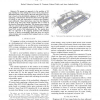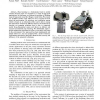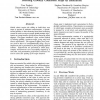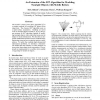45 search results - page 6 / 9 » The Revisiting Problem in Mobile Robot Map Building: A Hiera... |
IROS
2009
IEEE
14 years 2 months ago
2009
IEEE
— We present an approach to the problem of 3D map building in urban settings for service robots, using threedimensional laser range scans as the main data input. Our system is ba...
ICARCV
2006
IEEE
14 years 1 months ago
2006
IEEE
— In the simultaneous localization and mapping (SLAM) problem, a mobile robot must build a map of its environment while simultaneously determining its location within that map. W...
ICRA
2007
IEEE
14 years 1 months ago
2007
IEEE
— Map learning is a fundamental task in mobile robotics because maps are required for a series of high level applications. In this paper, we address the problem of building maps ...
ICRA
2000
IEEE
13 years 11 months ago
2000
IEEE
Mobile robots require the ability to build their own maps to operate in unknown environments. A fundamental problem is that odometry-based dead reckoning cannot be used to assign ...
IJCAI
2003
13 years 8 months ago
2003
The iterative closest point (ICP) algorithm [2] is a popular method for modeling 3D objects from range data. The classical ICP algorithm rests on a rigid surface assumption. Build...




